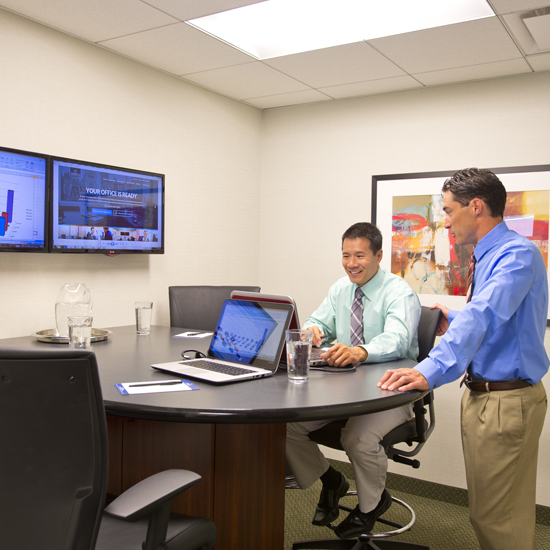Face-to-face meetings allow for more effective communication, strong communication development, and increased engagement, so we find that despite technological advances, many companies still prefer this type of meeting, and therefore learning how to hold effective face-to-face meetings will help you reach your goals to lead, organize or contribute to better communication in the workplace.
In this article we will address why face-to-face meetings and their advantages are important and how they are conducted with your team, customers and co-workers, read on.

Concept of meetings
Meeting is a real-time gathering of two or more people to achieve a common goal through conversation and interaction. Meetings are a key element of successful business management. They help you share information, solve problems and give everyone in your team the opportunity to work together.
Objectives of face-to-face meetings
Face-to-face meetings, as noted by us, are essential to fostering a strong culture, developing a relationship with clients, interacting with individuals at a deeper level, and highlight the most important objectives of face-to-face meetings, as follows:
Sharing information
Sharing information is an essential function of face-to-face meetings, and this meeting coordination helps everyone access the same information.
Problem Solving
Face-to-face meetings help solve problems for your team members and give them a sense of support in their role, using each team member as an asset to help others overcome their work-related issues.
Decision-making
Face-to-face meetings are held to make decisions on how to manage certain aspects of work or a new project, especially at executive meetings.
Advantages of face-to-face meetings
Because of the many advantages they offer, face-to-face meetings remain a popular choice for organizations. Meeting with coworkers, clients and colleagues face-to-face can help you increase your ability to achieve the following:
Sharing information
Sharing information is an essential function of face-to-face meetings, and this meeting coordination helps everyone access the same information.
Problem Solving
Face-to-face meetings help solve problems for your team members and give them a sense of support in their role, using each team member as an asset to help others overcome their work-related issues.
Decision-making
Face-to-face meetings are held to make decisions on how to manage certain aspects of work or a new project, especially at executive meetings.
Advantages of face-to-face meetings
Because of the many advantages they offer, face-to-face meetings remain a popular choice for organizations. Meeting with coworkers, clients and colleagues face-to-face can help you increase your ability to achieve the following:
1. Monitoring and interpretation of non-verbal indicators
Face-to-face meetings help you analyze subtle behaviors such as body language, facial expressions and visual communication And simple non-verbal communication can help you judge how involved others are in the discussion and provide insight into how they feel, You can use this non-verbal evidence to guide your responses and discussions, for example, If you are in a meeting with a customer who inspects his watch constantly, you can use a more exciting tone or change the subject to refocus his attention.
2. Innovate creative ideas
When individuals are able to discuss their thoughts in person, collaboration occurs more naturally, face-to-face meetings also simplify attendees to discover the completeness of someone's conversation and, therefore, allow them to feel more comfortable contributing to their ideas.
It may also allow participants to present their ideas graphically on a whiteboard or piece of paper to make sure everyone is on the same page, finally, consider scheduling face-to-face meetings when you need to discuss difficult strategic or creative ideas with a group.
3. Reducing the use of technology
While technology has its advantages, holding a meeting without dealing with camera or audio problems, internet connectivity issues, or other technical problems may save time and reduce stress. In addition, it is important to make face-to-face meetings a priority for important discussions so that everyone can hear and see what is going on.
6. Addressing sensitive issues and communicating effectively
When you need to address a sensitive problem, face-to-face meetings can help you explain the problem clearly without any misinterpretation, it can also be easier to express empathy and understanding, which can help you solve the problem together.
Face-to-face meetings also facilitate effective communication by providing participants with non-verbal signals and the ability to ask questions, which reduces the likelihood of misinterpretation of texts, emails or other communications.
7. Enhancing productivity
Face-to-face meetings can help enhance the work ethic of the entire team, increase their productivity and make sure they are on the right track within their projects, as the meeting will allow anyone to share updates about their work, if someone is not on track, regular group meetings will ensure you are aware of this early in the process.
How to manage effective meetings
In order to have effective face-to-face meetings, you need to follow the following tips:
- You must have a clear agenda for the group meeting, and it may be better to have an informal agenda.
- Determine who should attend the meeting, as the meetings may be held by smaller groups or teams that require specific individuals only to succeed.
- Create a meeting environment in which everyone feels comfortable participating fully in discussions throughout the session without feeling distracted.
- Determine your meeting style by welcoming and being friendly to all attendees before starting with presentations and discussion topics.
- Monitor time so you don't run over or distract you from finishing everything on your agenda before closing.
- Review the list of meetings of the Panel as it is an excellent tool for tracking all things that need to be completed during the Panel's session.
Conclusion:
Customers, employees and colleagues may be more interactive and participate in face-to-face meetings by encouraging them to be fully present, and when meeting attendees can see each other in person, they are more inclined to participate in the discussion, and therefore consider organizing face-to-face meetings if you want to promote participation and participation in your company.
other topics:
reference
1. << Face-to-face communication: healthier than digital? >>، psychologytoday
2. << Importance of face-to-face networking forums >>,
2. << Importance of face-to-face networking forums >>,

Add New Comment